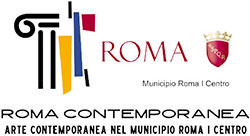Primordial Future
“All the art of the past rises up before me, the art of all ages and all civilisations, everything becomes simultaneous, as if space had replaced time. Memories of works of art blend with affective memories, with my work, with my whole life.” Alberto Giacometti
Could the future be an echo resonating from our origins?
Primordial. A word that evokes deep sources, ancient lands, silences suspended between memory and birth. It is where everything began, the original energy that vibrates beneath the surface of everything, invisible but powerful, and which continues to shape the present.
In this tension towards the origin, human beings have always sought a language to give shape to the invisible. It is from this desire for contact with that which transcends them that the first marks traced on stone were born: imprints, figures, symbols that still resonate today like echoes of a universal memory. Cave paintings represent one of humanity's earliest artistic expressions. The oldest, dating back over 40,000 years, are found in caves scattered throughout the world. These are not simple decorations, but gestures laden with meaning: propitiatory rites, collective narratives and, according to more recent interpretations, authentic spiritual practices through which humans established a connection with the invisible and with the vital forces of nature.
What is striking, even after thousands of years, is their original power. Essential yet universal traits, which already contained the desire to leave a trace, to give shape to mystery, to transform experience into image. Cave paintings thus represent a founding act not only of art, but of consciousness itself. The moment when human beings began to dialogue with time, attempting to capture its echo and project it into the future.
Maria Boström's work fits into this archaic tradition. Her artworks take us on a journey that has the flavour of myth and the density of memory, intertwining the past and the future in a single gesture, in a continuous vibration between the origin and what is yet to be born.
Two complementary forces can be perceived in her canvases: on one hand, a reference to an archaic, earthy language, made up of pigments that seem to come straight from the cave paintings of prehistoric times; on the other, an openness towards an undefined material, made up of colour fields that light up and vibrate like reflections of a future still under construction. It is in this dialogue that the essence of Primordial Future lies, an infinite cycle in which the past does not disappear but is renewed, becoming the very breath of the present and the matrix of the future.
Maria Boström's work is not merely to be contemplated: it breathes. The canvases, marked by dense layers, scratches and spatula strokes, change with the shifting light, awakening and falling asleep like living creatures. Their pictorial matter pulsates, offering itself and then retreating, forcing the observer into a relationship of intimacy and listening. It is a language that cannot be exhausted by the definition of “abstract”; what emerges is rather a visual stream of consciousness, a pure emotional dimension that alternates between delicacy and strength, silence and urgency.
Alongside the twenty original paintings, the exhibition brings together the entire spectrum of Maria Boström's creative process, expanding it into new forms of experimentation. The carpets, created in collaboration with Moooi Carpets, transform the pictorial gesture into fabric, towards a tactile and almost domestic dimension, in which the work becomes a landscape to be inhabited. The prints on plexiglass, part of the Actam Rem Ago project, translate fragments of the original paintings into photographic compositions, multiplying the material into translucent surfaces that seem to float in the space of an indefinite time. The scarves are nothing more than an additional level of dialogue in which the work becomes a body and moves with the wearer. Finally, the jewellery, small concretions of energy and form, condense the artist's research into symbols to be cherished, tangible fragments of a larger spiritual universe.
The thread that ties these different languages together is the same primordial energy that guides Maria Boström's hand. Her artistic practice was born in a context of retreat and immersion in nature, far from everyday life. It is there that the artist listens, receives and transforms. Hers is a declaration of faith in art as a process of regeneration. It is the recognition that ancestral memory is not a burden, but a driving force, a living archive that is renewed in the creative act. And it is, above all, an act of love as cosmic energy, the principle that moves everything, a vibration that links past and future in a single breath.
Primordial Future narrates an ongoing process, where forms are defined and dissolved, oscillating between presence and absence, as if the truth of the work lay in its continuous elusiveness. In this movement, the viewer is called upon to play an active role: to perceive with the body, to let oneself be traversed, to grasp the vibrations that the artwork emanates. Art thus becomes an experience of awareness, a spiritual exercise that reminds us that the future is not a distant projection, but a constant return to our roots.
Curated by
Francesca Brunello




